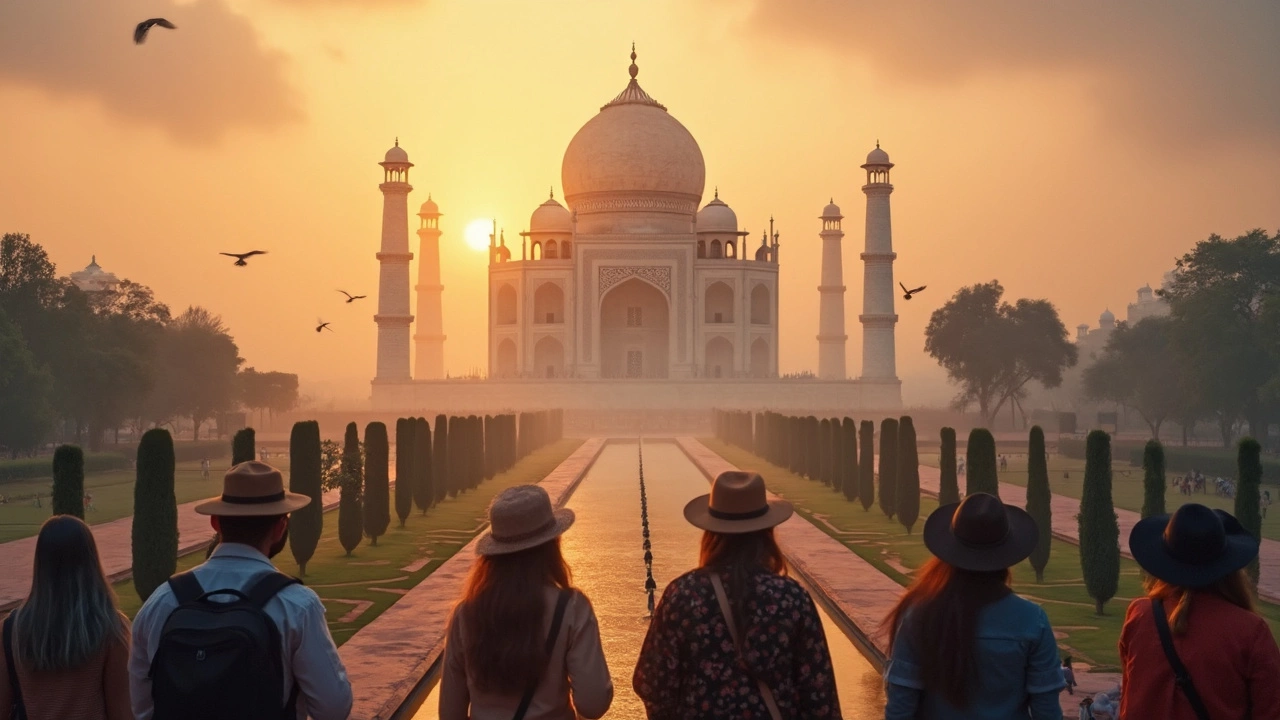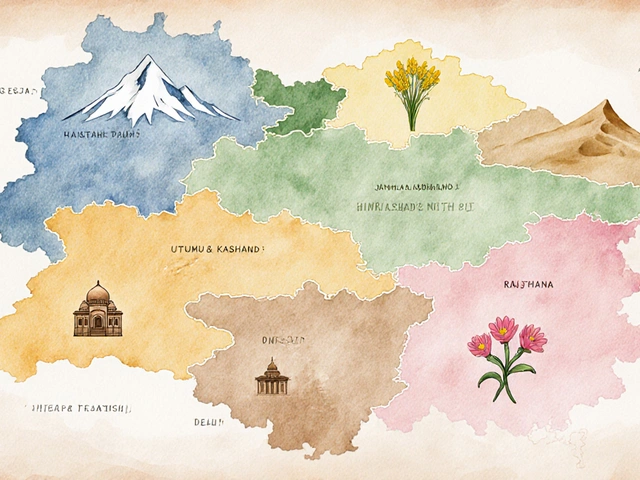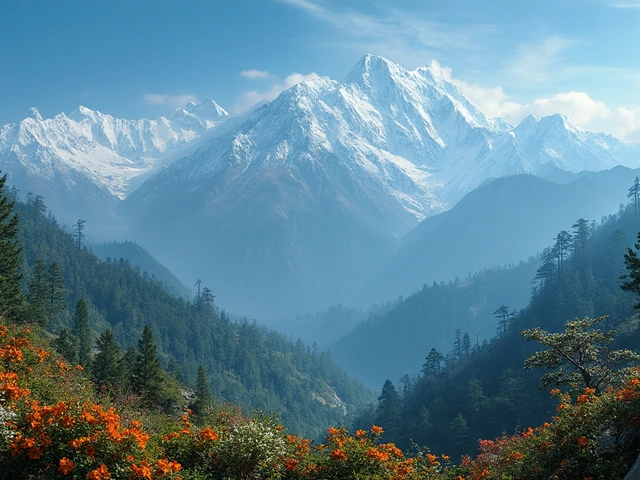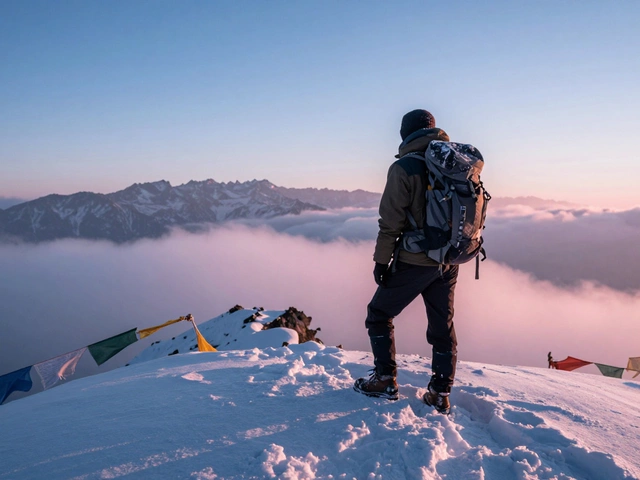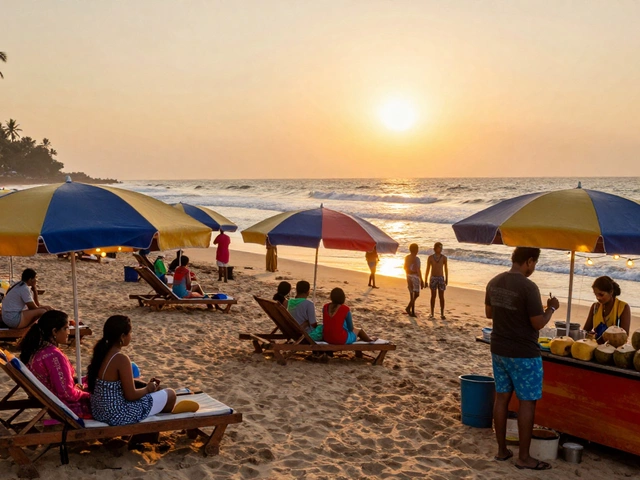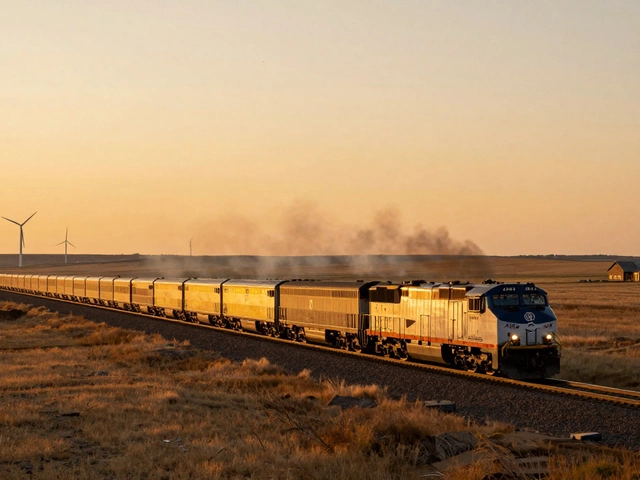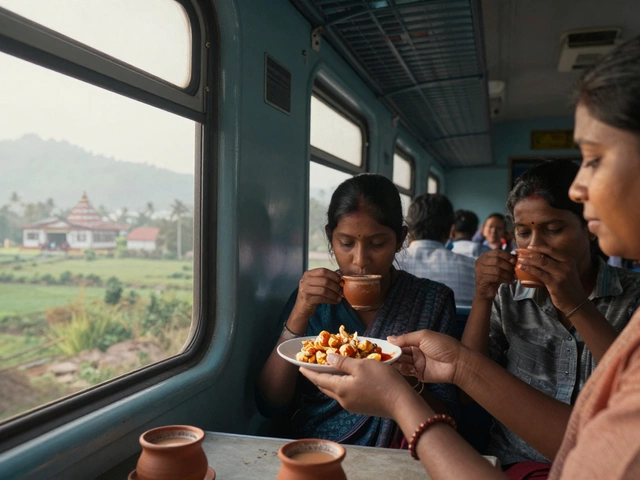The north of India totally dominates any list of the country’s most visited zones by foreign tourists. Agra, Jaipur, Delhi, Varanasi—these city names pop up again and again in the bucket lists of travelers from all over the world. And it’s not just hype: actual data from India’s Ministry of Tourism shows North India sweeps up the lion’s share of international tourist arrivals every year.
Why here, and not somewhere else in India? For starters, it’s got the superstar sites everyone’s heard of. The Taj Mahal ranks as one of the top most-visited monuments by foreigners, and Jaipur’s palaces and Delhi’s mix of chaos and charm make them unmissable. Add to that the spiritual energy of Varanasi and the rugged Himalayan landscapes of Himachal Pradesh and Uttarakhand—there’s a mix here that keeps travelers hooked.
If you’re planning to check out North India, there’s a practical bonus: cities like Delhi are also big international travel hubs, so flights are easy to find and usually cheaper compared to the far-flung destinations in the south or northeast of India. Plus, the famous "Golden Triangle" (Delhi-Agra-Jaipur) is well set up for tourists, with loads of tour options and English-speaking guides everywhere.
- What Makes North India a Crowd-Puller?
- Places in North India Most Visited by Foreigners
- What Draws Tourists to These Spots?
- Tips for Visiting North India Like a Pro
- Hidden Gems North India Offers
What Makes North India a Crowd-Puller?
So what’s the secret sauce that puts North India on nearly every foreign traveler’s map? It comes down to a combo of iconic sights, easy travel routes, famous culture, and bang-for-your-buck experiences. This region is where you get that classic "Incredible India" vibe without hunting around for it.
Let’s get real: most first-timers want to see the Taj Mahal, and it’s right here. But it’s not just about one monument. Delhi packs in UNESCO World Heritage sites like Qutub Minar and the Red Fort. Jaipur shows off royal palaces and crazy pink buildings. And then there’s the holy Ganges at Varanasi, where travelers catch wild glimpses of ancient rituals. Whether it’s history, food, or temples, North India loads it all onto one plate.
It’s not just about famous buildings. North India is also ground zero for huge festivals—think Holi’s color explosions in Mathura or Diwali’s lamp-lit streets in every northern city. Tourists get to jump in, and there’s always a story or photo op. Food’s a big hook, too: street snacks like chaat or rich dishes like butter chicken easily turn into lifelong cravings.
Getting around is way easier here than you might expect. Major cities like Delhi, Agra, and Jaipur are tightly connected with highways, trains, and even luxury tour buses. Add to that English-speaking guides and tourist offices—no surprise most foreign visitors start their Indian adventure up north.
| City | Annual Foreign Tourist Arrivals |
|---|---|
| Delhi | 2.7 Million |
| Agra | 2 Million |
| Jaipur | 1.4 Million |
| Varanasi | 700,000 |
| Amritsar | 500,000 |
The numbers make it clear: north india isn’t just famous, it’s busy—most foreign tourists hit these hot spots first when they come to India.
Places in North India Most Visited by Foreigners
When people think of north india, a few blockbuster places always come up. Grab a map and you’ll notice that most foreigners hit what’s called the Golden Triangle first—Delhi, Agra, and Jaipur. These cities make up India’s most popular tourist route. But that’s not the whole picture—there’s more to see, and plenty of stats to back it up.
Check this out. According to the Ministry of Tourism’s latest stats for 2024, here’s where most international visitors in North India headed:
| City | Main Attractions | Approx. Foreign Visitors (2024) |
|---|---|---|
| Agra | Taj Mahal, Agra Fort | 2.7 million |
| Delhi | Red Fort, India Gate, Qutub Minar, Markets | 2.3 million |
| Jaipur | Amber Fort, City Palace, Hawa Mahal | 1.8 million |
| Varanasi | Ganga Ghats, Sarnath | 760,000 |
| Amritsar | Golden Temple, Jallianwala Bagh | 540,000 |
| Rishikesh & Haridwar | Ganga Aarti, Adventure Sports | 340,000 |
Agra clearly leads the pack, mostly because everyone wants that perfect photo at the Taj Mahal. Delhi is right behind—makes sense, since it’s the main entry point for so many international flights. Jaipur, known for its pink buildings and royal history, is another can’t-miss spot, especially if you want those classic “Incredible India” vibes in your selfies.
Dig a little deeper, and you’ll see spiritual places like Varanasi and Amritsar grabbing a good chunk of visitors each year too. These spots aren’t just for pilgrims—backpackers and adventure seekers love the vibe, the food, and the stories you won’t get anywhere else. Holy cities like Rishikesh are big among yoga and wellness fans, plus there’s easy access to the Himalayas for those looking to trek or try white-water rafting.
Travelers mostly stick to these hotspots not just for the sights but because these places have all the tourist-friendly stuff: more hotels, better transport, guided tours, and lots of English spoken on the streets. If you want your first trip through North India to be smooth, these cities are a safe bet. But, of course, there’s always more to explore if you step off the main path.
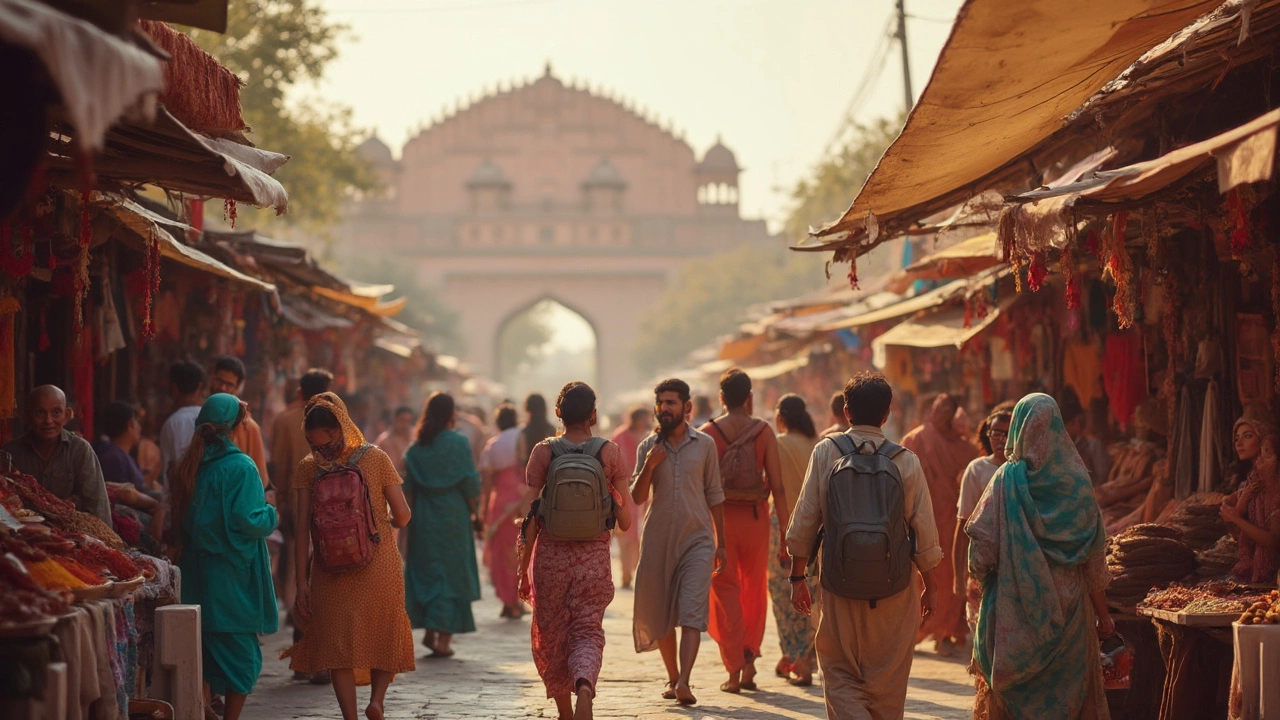
What Draws Tourists to These Spots?
If you pull up any travel forum or ask seasoned globetrotters, you’ll notice that North India’s top cities keep getting repeat mentions. Why? It’s not just pretty buildings or a couple of old forts. This region delivers a mix of history, culture, food, and sensory overload—and that’s exactly what travelers crave.
Let’s break down what really hooks people:
- north india has the Taj Mahal, which, honestly, is on just about every foreign traveler’s checklist. It’s not just a symbol of India—it’s on UNESCO’s World Heritage list and gets over 6 million visitors a year. People travel half the world just for that one sunrise photo.
- The "Pink City" of Jaipur draws crowds with its shockingly colorful palaces, lively markets, and the Amber Fort. Forbes even named it one of the best budget travel destinations, so you get history and savings in one go.
- Delhi is a crazy blend of ancient and modern. Tourists love wandering from Mughal marvels like the Red Fort to buzzing street food markets. Plus, it has world-class museums and a pulsing nightlife that makes it more than just a quick stopover.
- Varanasi is a different deal. For tourists seeking spirituality or wanting to see traditions up close, the city’s river rituals and old temples are magnetic. No other place offers the kind of scenes you’ll catch at sunrise here—think real monks, fire rituals, and the misty Ganges.
Hidden under that big-name appeal is variety. Heading into the Himalayan foothills brings mountain towns like Manali and Rishikesh, which are popular for adventure sports, yoga retreats, and stunning scenery. Really, the reason North India pulls in so many travelers is there’s something powerful for every type: history fans, spiritual seekers, foodies, Instagrammers, and those chasing wild landscapes all find their niche.
And let’s not ignore comfort. The infrastructure for tourists is solid—loads of hotels in every budget bracket, English spoken widely, and tour operators who know what foreigners want and need. This makes first-time travel in India a lot less intimidating.
Tips for Visiting North India Like a Pro
Sure, North India is packed with famous sights, but having a smooth trip means knowing the ropes. Here’s how to dodge beginner mistakes and travel smart in this busy region.
- north india can get crazy hot and cold. Summers (April–June) often push 40°C in Rajasthan and Delhi, while winters (December–February) in the Himalayas can freeze your toes off. Always check the weather before booking and pack layers just in case.
- Trains are the classic way to get around between major cities. Book your tickets early—sometimes weeks ahead—using IRCTC (India’s official train booking site). Major tourist spots like Agra and Jaipur are well-linked, but during festivals or holiday periods, everything sells out.
- Street food is legendary, but stick to the busy stalls where locals line up. If you’re not sure about your stomach, skip raw stuff like salads and go for cooked, piping-hot options.
- Carry cash and a card. ATMs are everywhere in cities, but in hilly areas like Himachal or Uttarakhand, they can be rare—sometimes out of service. Try to break larger bills into smaller denominations before heading to smaller towns.
- Dress code matters, especially around temples and in smaller towns. Carry a scarf or shawl for covering up if you visit religious sites. Light, loose clothing helps with the heat, but think modest over trendy.
To make things even clearer, here’s a quick breakdown of top travel essentials for North India:
| Tip | Why It’s Useful |
|---|---|
| Pack Layers | Weather is unpredictable across cities and mountains. |
| Use Official Apps | Apps like IRCTC, Uber/Ola, and Zomato are lifesavers for trains, taxis, and food. |
| Stay Hydrated | Bottled water is a must; tap water isn’t safe for foreigners. |
| Photocopy Your Passport | Many hotels require ID checks; a copy saves you from misplacing the original. |
| Beware Fake Guides | Always use authorized guides (with visible IDs), especially at monuments like the Taj Mahal. |
Last thing: Ask for prices before saying yes to rides, souvenirs, or services. Haggling is totally normal in markets—just keep it friendly. Let your curiosity guide you, but keep your wits about you and you’ll have an awesome time exploring North India.
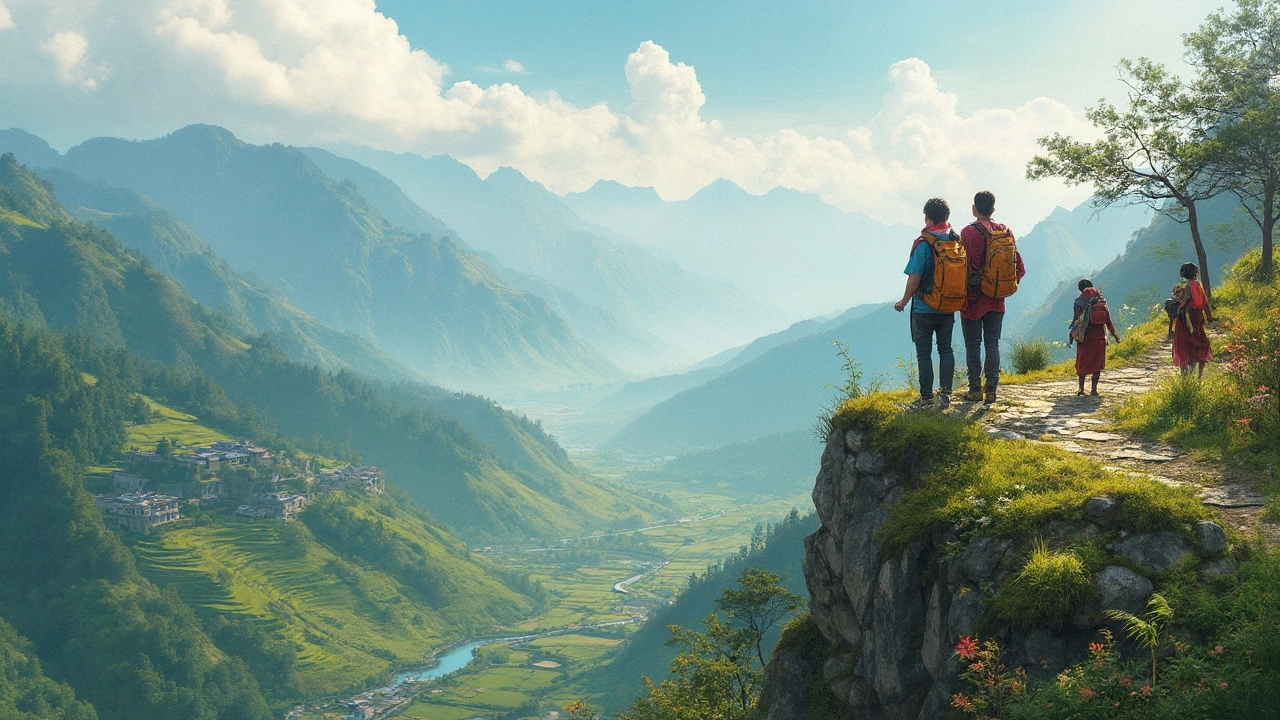
Hidden Gems North India Offers
Most tourists hit the big-ticket cities, but North India hides plenty of less-crowded spots worth your time. These places aren’t usually on the front of travel brochures, but they give you a real feel for the region without the crowds. They’re perfect if you want to ditch the usual path and see something different.
Tucked away in Himachal Pradesh, Spiti Valley is a cold desert mountain valley that feels almost like another planet. It’s much quieter than famous Ladakh, but you get similar jaw-dropping views, old monasteries, and Tibetan culture. Entry used to be tricky, but now you can take public buses or rent a cab right from Shimla or Manali. Just remember—it’s only open from May to September due to snow.
If you’re more of a city explorer, try Orchha in Madhya Pradesh. The town is dotted with centuries-old palaces, temples, and chhatris (tombs), but it hardly ever feels packed. Sunset by the Betwa River is stunning, and the sounds of local chants at Ram Raja Temple are an experience you probably won’t find in tourist-heavy spots like Agra or Jaipur.
Want somewhere peaceful and green? Try Munsiyari in Uttarakhand. It’s a small town in the hills known for crazy good views of the Panchachuli peaks. Trekkers use it as a base for serious mountain hikes, but you don’t have to be super fit to just chill and watch the sunrise over the snowline.
Here are a few more hidden gems in north India that are starting to get noticed by savvy travelers:
- Tirthan Valley, Himachal Pradesh – Great for trout fishing, hiking, and zero crowds.
- Chopta, Uttarakhand – Camping, birdwatching, plus some of the best Himalayan views at sunrise.
- Bundi, Rajasthan – Quirky step-wells, painted forts, and barely any international tourists.
- Khajjiar, Himachal Pradesh – Sometimes called "Mini Switzerland" for its forests and meadows.
For anyone after unique experiences and fewer crowds, these places are gold. Here’s how they stack up in terms of popularity and accessibility:
| Place | Distance from Major City | Best Time to Visit | Less than 10,000 Foreigners/Year? |
|---|---|---|---|
| Spiti Valley | 200 km from Manali | May-Sept | Yes |
| Tirthan Valley | 70 km from Kullu | Mar-June, Sept-Nov | Yes |
| Munsiyari | 130 km from Pithoragarh | Mar-June, Sept-Nov | Yes |
| Bundi | 210 km from Jaipur | Oct-Mar | Yes |
| Orchha | 120 km from Gwalior | Oct-Mar | Yes |
If you want your north india trip to stand out, build a few of these hidden gems into your plan. Chances are, you’ll remember them even more than the famous cities.
